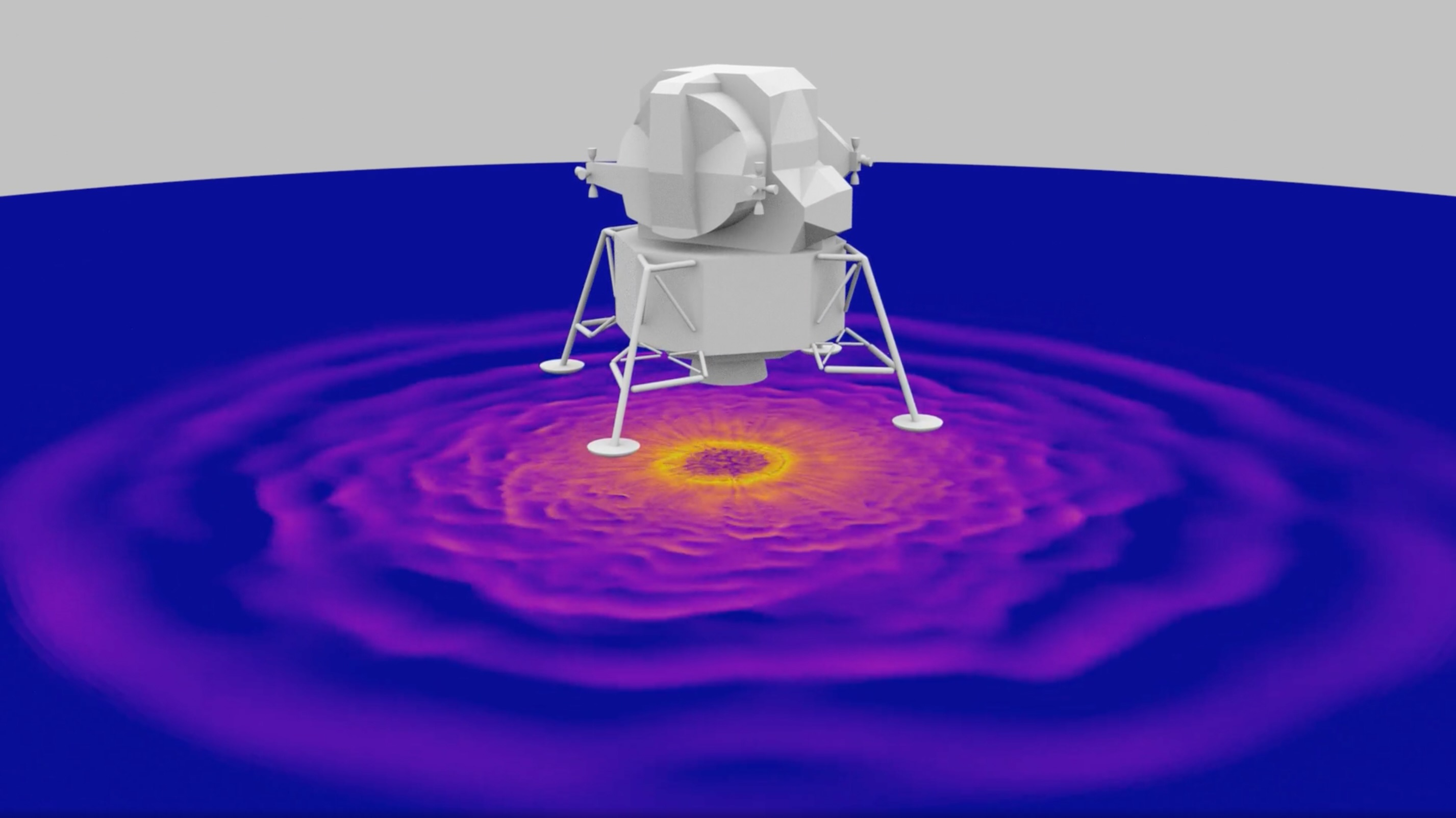
NASA has simulated the environmental effects of landing on the lunar surface as the space agency prepares to send astronauts back to the moon on its upcoming Artemis missions.
Using supercomputer simulations, researchers at NASA's Marshall Space Flight Center in Huntsville, Alabama, demonstrated lunar plume-surface interactions (PSI) — the interplay between the supersonic plumes of hot gas expelled from a spacecraft's engine toward the surface during landing and liftoff.
"Landing on the moon is tricky," NASA officials said in a Nov. 14 statement. "When missions fly crew and payloads to the lunar surface, spacecraft control their descent by firing rocket engines to counteract the moon's gravitational pull."
Related: NASA's Artemis 1 moon mission explained in photos

The simulations show how the engine plumes of NASA's Apollo 12 lander interacted with the lunar surface when the vehicle touched down in November 1969. The lateral, or sideways, force exerted by the plumes over a flat computational surface — also known as shear stress — created ripples across the surface in relation to the spacecraft's altitude.
The team created an animation that captured the last half-minute of a spacecraft's descent before engine cutoff. The fluctuating radial patterns show the intensity of predicted shear stress, with lower levels represented by dark purple and higher ones by yellow.
As the lander descends, the animation shows a rapid increase in shear stress exerted on the lunar surface, which could stir up lunar regolith — the layer of fine, loose dust and rock on the moon's surface — and cause erosion, according to the statement.
"This can cause hazards like visual obstructions and dust clouds that can interfere with navigation and science instrumentation or cause damage to the lander and other nearby hardware and structures," NASA officials said in the statement. "Additionally, the plumes can erode the surface under the lander."
Via its Artemis program, NASA aims to set up a long-term presence on the moon and explore more of the lunar surface than ever before. This means that future landers will need to be larger and equipped with more powerful engines than the Apollo landers were.
Although craters were not formed by Apollo-scale landers, larger landers might erode the surface differently and cause cratering in their landing zones, which could pose a risk to the lander's stability and astronauts aboard, according to the statement.
"With the agency's goal to establish a sustained human presence on the moon, mission planners must understand how future landers interact with the lunar surface as they touch down in unexplored moonscapes," NASA officials said in the statement.
Therefore, the new computer simulations can be used to predict PSI for upcoming missions, helping to minimize risks to spacecraft and crew.







